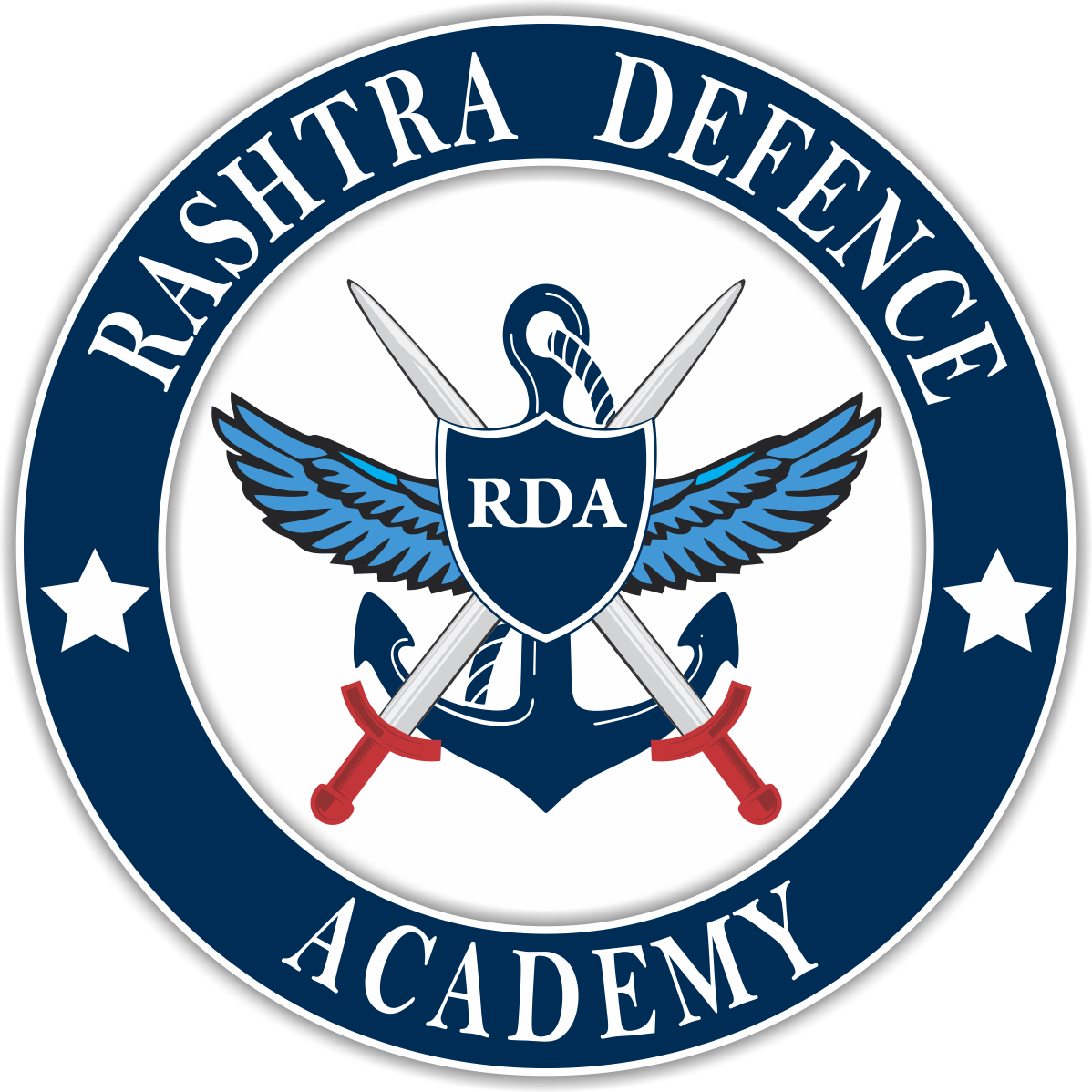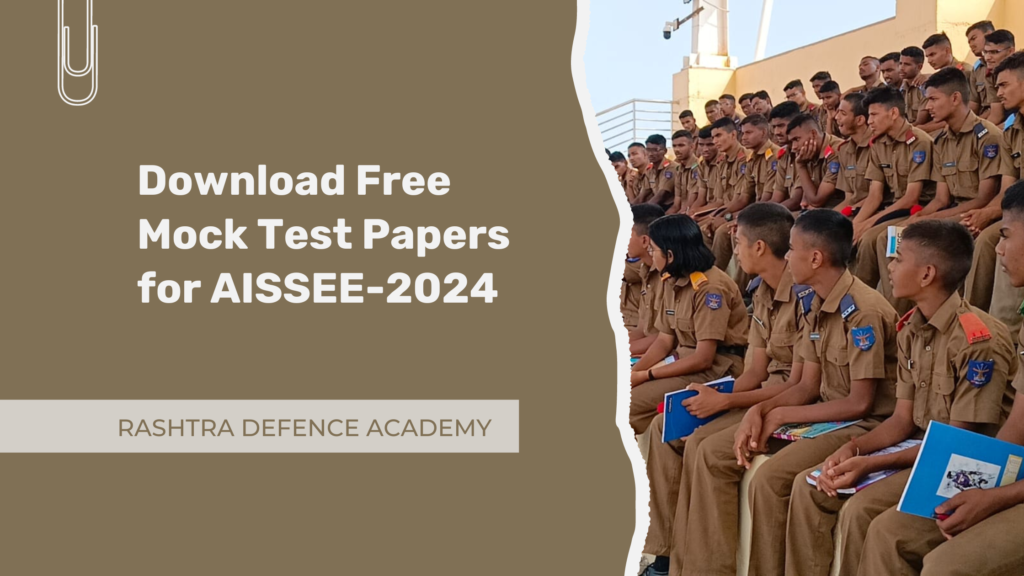The AISSEE-2024 dates are declared and many students are looking for AISSEE Previous Year Papers. The All India Sainik School Entrance Examination (AISSEE) is a crucial milestone for students aspiring to get admission to 33 prestigious Sainik Schools across the country. Aspirants preparing for AISSEE often seek effective ways to prepare for this competitive exam use various resources for their exam preparation, and one valuable resource in their arsenal is the AISSEE previous year papers. In this blog, we will delve into the significance of practicing these papers, how they aid in preparation, and tips on maximizing their benefits.
The Importance of AISSEE Previous Year Papers:
Understanding AISSEE-2024 Pattern:
- AISSEE previous year papers offer invaluable insights into the exam pattern. By analyzing the distribution of questions across subjects, types of questions, and marking schemes, aspirants can tailor their preparation strategies to align with the actual exam.
- Time Management Skills: Time management is a critical aspect of any competitive exam. Solving previous year papers under exam conditions helps students enhance their time-management skills, ensuring they can allocate appropriate time to each section and question.
- Identifying Important Topics: Previous year papers serve as a roadmap for identifying the most frequently asked topics. By recognizing recurring themes, aspirants can prioritize their preparation and focus on strengthening their understanding of key subjects and concepts.
- Boosting Confidence: Regular practice with AISSEE previous year papers instills confidence in aspirants. Familiarity with the exam format and the types of questions asked builds a sense of assurance, reducing anxiety on the actual exam day.
- Adapting to Exam Environment: Solving papers in a simulated exam environment helps candidates adapt to the pressure and conditions of the actual test. This practice is essential for reducing stress and improving performance during the real exam.
How to Effectively Use AISSEE Previous Year Papers:
- Start Early: Begin incorporating previous year papers into your study routine well in advance. This allows for a gradual understanding of the exam pattern and sufficient time to address any knowledge gaps.
- Systematic Analysis: After solving a paper, conduct a detailed analysis of your performance. Identify weak areas and areas of strength, allowing you to tailor your subsequent study sessions more effectively.
- Regular Practice Sessions: Devote specific time slots for regular practice with AISSEE previous year papers. Consistency is key, and frequent practice ensures a steady improvement in problem-solving skills.
- Simulate Exam Conditions: When solving the papers, replicate exam conditions as closely as possible. This includes adhering to time limits, avoiding distractions, and using only the resources allowed during the actual exam.
- Seek Guidance: If you encounter challenges or have doubts while solving previous year papers, seek guidance from teachers, mentors, or peers. Clarifying doubts promptly ensures a solid foundation in the topics covered.
Tips for Maximizing the Benefits:
- Create a Study Plan: Develop a comprehensive study plan that incorporates AISSEE previous year papers alongside regular study materials. A well-organized plan ensures holistic preparation.
- Utilize Answer Keys: Most previous year papers come with answer keys. Utilize these keys to check your responses and understand the correct solutions. This process aids in reinforcing concepts and rectifying mistakes.
- Vary Your Practice: While practicing previous year papers is essential, supplement your preparation with a variety of study materials. This approach ensures a well-rounded understanding of the syllabus and increases adaptability to different question formats.
- Revision and Consolidation: Regularly revise and consolidate what you have learned from solving previous year papers. This revision is crucial for retaining information and reinforcing your understanding of key concepts.
Conclusion:
All India Sainik School Entrance Exam previous year papers are invaluable tools in the arsenal of every aspirant aiming to secure admission to Sainik Schools. By understanding the importance of these papers, incorporating them into a structured study plan, and following effective practices, candidates can significantly enhance their preparation and boost their chances of success. Remember, success in the AISSEE is not just about answering questions; it’s about mastering the art of strategic preparation. So, gear up, practice diligently, and embark on your journey towards success in the AISSEE!
AISSEE Mock Test Paper-1
AISSEE Mock Test Paper-2
AISSEE Mock Test Paper-3
Submit your details here for more information:

Frequently Asked Questions [FAQs]:
Q: Who is eligible for AISSEE 2024?
Ans: Candidates (boys & girls) studying in class 5/6 and with a date of birth ranging from 1 April 2012 to 31 March 2014 are eligible for admission in class 6th and Candidates (boys & girls) studying in class 8/9 and with a date of birth ranging from 1 April 2009 to 31 March 2011 are eligible for admission in class 9th.
Q: How many seats are there in Sainik Schools?
Ans: There are a total of 33 Sainik Schools in India. Every Sainik School has approx. 90-100 seats in class 6th and 10-15 seats in class 9th for both boys and girls.
Q: How many marks do you need to pass Sainik School Exam?
Ans: The passing criteria for Sainik School varies depending on the class you are applying for. Here’s a breakdown of the minimum marks required:
Class VI
- Minimum marks in each subject: 33%
- Minimum marks in total: 40%
Class IX
- Minimum marks in each subject: 40%
- Minimum marks in total: 45%
Please note that these are the minimum marks required to qualify for Sainik School. The actual cutoff marks may vary from year to year and depend on factors such as the number of applicants and the overall difficulty level of the exam.
Here are some additional things to keep in mind:
- Students from reserved categories (SC, ST, OBC) will be eligible for a relaxation of 5% in the minimum marks required.
- Children of ex-servicemen (ESM) will be eligible for a relaxation of 10% in the minimum marks required.
Q: What is the age limit for AISSEE 2024?
Ans: Class VI: Applicants for Class VI must be between the ages of 10 and 12 on March 31, 2024. This means that they must have been born between April 1, 2012, and March 31, 2014.
Class IX: Applicants for Class IX must be between the ages of 13 and 15 on March 31, 2024. This means that they must have been born between April 1, 2009, and March 31, 2011.
Q: How many students appear for AISSEE?
Ans: The number of students who appear for the AISSEE varies from year to year. According to the PIB, a total of 1,79,809 candidates appeared in AISSEE-2023. Out of which 1,24,467 candidates qualified in the written examination that was conducted pan India.
In 2022, the number of candidates who appeared in the exam was 1,61,082. Out of which 1,12,440 candidates qualified in the written examination.
In 2020, the number of candidates who appeared in the exam was 1,39,133. Out of which 92,906 candidates qualified in the written examination.
The number of candidates who appeared in the exam has been steadily increasing over the years. This is due to the increasing popularity of Sainik Schools and the growing awareness of the importance of quality education.
Q: Are girls eligible for AISSEE?
Ans: Yes, girls are eligible for AISSEE. Both girls and boys can apply for admission to Sainik Schools through AISSEE 2024. The eligibility criteria for girls are the same as for boys. Girls can apply for admission to Class VI and Class IX. However, admission for girls is subject to availability of vacancies for Class 9 admission.
Q: Is All India Sainik School Entrance Exam tough?
Ans: Yes, the Sainik School entrance exam (AISSEE) is a competitive exam, and requires thorough preparation. The difficulty level of the exam varies depending on the class you are applying for. The Class IX exam is generally considered to be tougher than the Class VI exam.
Here are some of the factors that make the Sainik School entrance exam tough:
- High level of competition: Every year, lakhs of students apply for a limited number of seats in Sainik Schools. This means that the competition is very high, and only a small percentage of applicants are selected.
- Wide syllabus: The Sainik School entrance exam covers a wide range of subjects, including mathematics, science, English, history, geography, and general knowledge. This means that students need to have a strong understanding of all of these subjects in order to do well in the exam.
- Difficult exam pattern: The Sainik School entrance exam is a multiple-choice exam, with each question having four possible answers. This means that students need to be able to think critically and eliminate the wrong answers in order to choose the correct answer.
Despite the difficulty of the Sainik School entrance exam, it is not impossible to crack. With hard work and dedication, you can increase your chances of success. Here are some tips for preparing for the Sainik School entrance exam:
- Start preparing early: The earlier you start preparing, the more time you will have to cover the syllabus and practice for the exam.
- Understand the syllabus: Make sure you are familiar with the syllabus and the exam pattern. This will help you focus your preparation on the topics that are most likely to be covered in the exam.
- Practice regularly: The more you practice, the better you will become at answering the types of questions that are asked on the exam.
- Take mock tests: Mock tests can help you assess your strengths and weaknesses, and identify areas where you need to focus your attention.
- Seek help from teachers or tutors: If you are struggling with any particular subject, don’t hesitate to seek help from teachers or tutors.
Q: Which is the best Sainik School in India?
Ans: Determining the “best” Sainik School in India is a subjective matter, as individual preferences and priorities vary. However, several Sainik Schools consistently rank among the top institutions in terms of academic excellence, infrastructure, facilities, and alumni achievements. Here are a few of the most highly regarded Sainik Schools in India:
- Sainik School Kazhakootam, Kerala
- Sainik School Korukonda, Andhra Pradesh
- Sainik School Satara, Maharashtra
- Sainik School Ghorakhal, Uttarakhand
- Sainik School Purulia, West Bengal
These are just a few examples of the many excellent Sainik Schools in India. The best school for a particular student will depend on their individual needs and preferences. It is important to consider factors such as academic rigour, location, and extracurricular activities when making a decision.
Q: Is there a negative marking in the All India Sainik School Entrance Exam?
Ans: No, there is no negative marking in the All India Sainik Schools Entrance Exam (AISSEE). This means that you will not be penalized for incorrect answers, so it is always better to attempt all questions. Negative marking can be a source of stress and anxiety for students, so its absence in AISSEE can help students relax and focus on performing their best.



